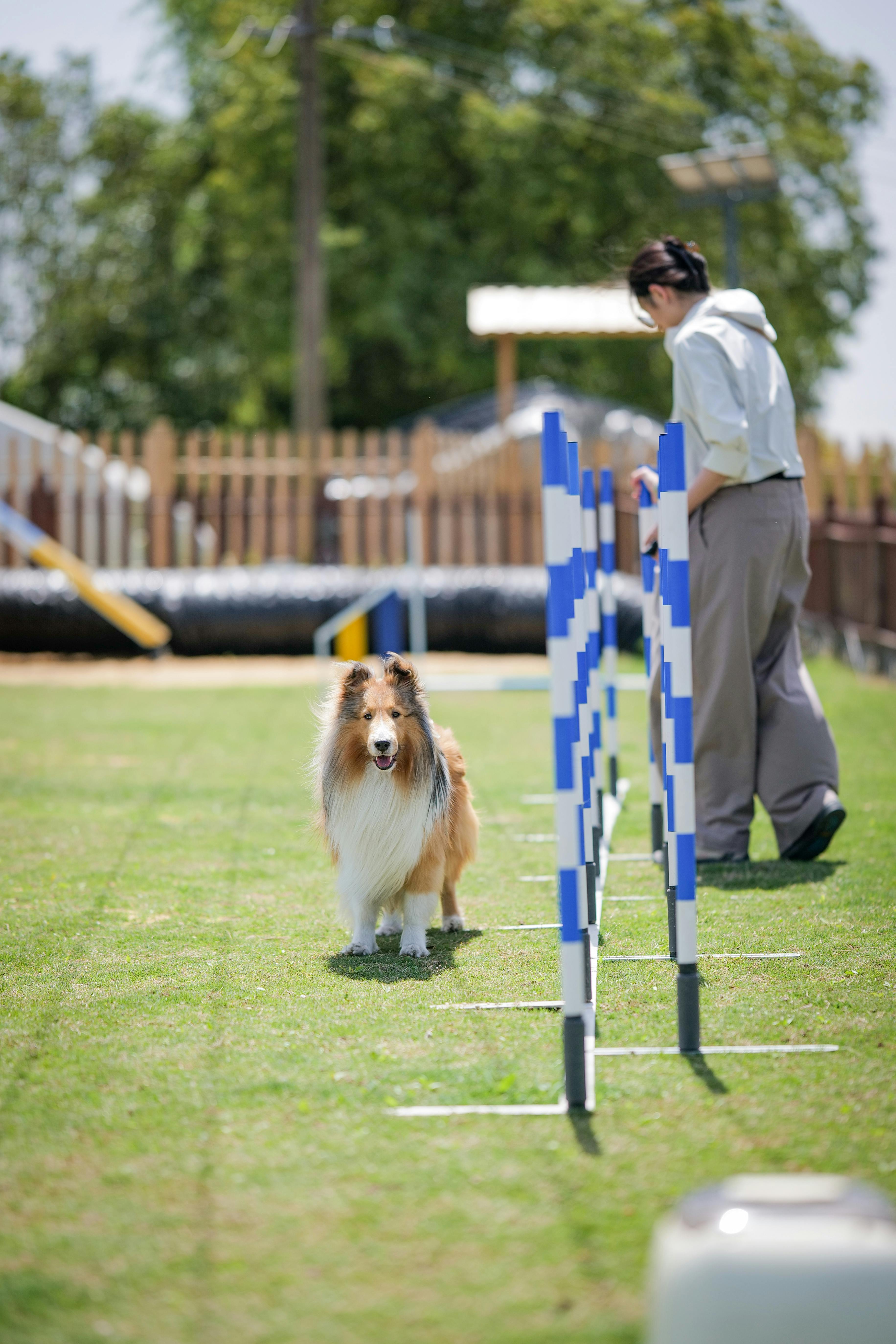Dog Training Dummy: A Comprehensive Guide to Effective Dog Training
Training your dog is essential for fostering a strong bond and ensuring their safety and good behavior. One of the most useful tools in dog training is the dog training dummy. Whether you are a novice or an experienced dog trainer, understanding the importance of a dog training dummy can significantly improve your training results. In this guide, you will learn about different types of training dummies, how to use them effectively, and tips to enhance your dog’s behavior.

Understanding the Fundamentals
The dog training dummy is a key tool used in various dog training exercises, particularly in retrieving and scent training. Training dummies are typically designed to simulate objects that a dog might be asked to retrieve in real-life situations, such as birds, balls, or other items. The goal is to provide a controlled and repeatable environment where a dog can learn to fetch, carry, and return objects correctly. This method is not only effective but also helps to improve your dog’s obedience and focus.
Historically, training dummies have been around for decades and were initially used in hunting scenarios to train dogs to retrieve prey. Today, they are commonly used in various training sessions, from basic obedience to advanced scent detection exercises. The versatility of dog training dummies makes them an invaluable tool for any dog trainer.
1.1 What is a Dog Training Dummy?
A dog training dummy is typically a soft, durable object designed for dogs to fetch or retrieve. These dummies come in various shapes and sizes, such as traditional bird-like forms or more straightforward cylindrical shapes. They can be made from a variety of materials like canvas, rubber, or plastic to suit different training needs.
While these tools may appear simple, they play a significant role in improving your dog’s ability to perform complex tasks. A well-made dog training dummy mimics the size and texture of real objects, ensuring that dogs become accustomed to a range of retrieval experiences.
1.2 Why Choose a Training Dummy?
Choosing a dog training dummy comes down to its intended purpose. Whether you are training a service dog, a hunting dog, or a family pet, the right dummy can provide clear training cues. By using training dummies, dogs are able to learn retrieval techniques without the added stress or potential injury of working with live animals.
Additionally, training dummies allow for safe, repetitive practice sessions that ensure dogs can refine their skills before being tested in real-life situations. This gradual progression helps them learn at their own pace and builds confidence in their abilities.
Practical Implementation Guide
Now that we understand the basics, let’s dive into how to implement the use of a dog training dummy effectively in your dog’s training regimen. Whether you’re introducing the dummy to a puppy or enhancing an adult dog’s skills, a structured approach will yield the best results.

2.1 Actionable Steps
- Step 1: Introduce the Dummy – Start by introducing the dog to the dummy in a low-stress environment. Allow your dog to sniff and explore the dummy, rewarding them for showing interest.
- Step 2: Start with Basic Retrieval – Hold the dummy at a distance and encourage your dog to fetch it. Use commands such as “fetch” or “bring it.” Gradually increase the distance as your dog becomes more comfortable.
- Step 3: Repetition and Consistency – Repeat the exercises multiple times in short sessions. Consistency is key to reinforcing the behavior. Always reward your dog for completing the task successfully.
2.2 Overcoming Challenges
Training with a dog training dummy may come with challenges. Here are some common obstacles and solutions:
- Challenge 1: The dog is uninterested in the dummy. Solution: Try using a dummy with a more appealing scent or texture. You can also try using treats or toys to encourage interest.
- Challenge 2: The dog refuses to return the dummy. Solution: Ensure you are rewarding your dog for bringing the dummy back. Use a higher-value treat or a favorite toy to reinforce the return.
- Challenge 3: The dog gets distracted easily. Solution: Practice in a distraction-free environment and gradually increase the level of difficulty by adding distractions.
Advanced Applications
Once your dog is proficient with basic retrieval techniques, you can start incorporating advanced applications into their training routine. These techniques help enhance your dog’s skills and prepare them for more complex tasks, such as scent detection or retrieving items from difficult environments.

3.1 Scent Detection Training
Scent detection is one of the more advanced uses of dog training dummies. This training involves adding a scent to the dummy so that the dog learns to track and locate it based on its smell. To start, use a highly detectable scent, such as a specific essential oil, and apply it to the dummy. Hide the dummy in various locations and allow the dog to find it using their sense of smell.
This type of training is especially useful for search-and-rescue dogs, police dogs, and hunting dogs. It’s important to use a dummy that is designed to hold scents without degrading them too quickly.
3.2 Advanced Retrieving in Difficult Environments
Once your dog has mastered basic retrieval, it’s time to increase the complexity. Begin by hiding the dummy in challenging environments, such as tall grass, forests, or urban areas. These scenarios mimic real-world conditions where a dog might be asked to retrieve an object.
Ensure that the training areas are safe and that the dog can navigate the space without risking injury. You may also want to use different types of dummies to simulate various environments, such as weighted dummies for water-based retrieval training.
Future Outlook
The dog training industry continues to evolve, with new methods and technologies emerging to improve training results. In the next 3-5 years, we can expect to see further innovations in dog training dummies, including dummies with built-in sensors or smart features that can track a dog’s progress. These advancements will make it easier for trainers to monitor performance and customize training routines.
As dog training becomes more tailored to individual needs, trainers can expect to see more personalized options for training tools, allowing for more effective and efficient dog training programs.
Conclusion
To sum up, the dog training dummy is an essential tool for any dog owner or trainer aiming to improve their dog’s behavior, obedience, and skillset. By understanding the basics and progressing to advanced techniques, you can provide your dog with the tools they need to succeed. Start by using these tools in a structured manner, and watch as your dog becomes a more confident and obedient companion.
Ready to enhance your dog’s training experience? Invest in a high-quality dog training dummy and begin your training sessions today!
Frequently Asked Questions
- Q: What is the best dog training dummy for beginners? A: For beginners, a soft, lightweight dummy is ideal. Start with a simple design that your dog can easily handle.
- Q: How long will it take for my dog to learn how to fetch a dummy? A: Most dogs will start learning within a few sessions. Expect initial progress within the first week of training, but full mastery may take several weeks of consistent practice.
- Q: How much time should I spend training each day? A: Aim for short, focused sessions of 15-30 minutes, 3-4 times a week. This will prevent burnout and keep the dog engaged.
- Q: Are dog training dummies expensive? A: The cost can range from $10 to $40, depending on the material and features. High-quality, durable dummies may cost more but are often a better investment.
- Q: How can I train my dog to return the dummy? A: Use positive reinforcement by rewarding your dog each time they bring the dummy back. Start with small distances and gradually increase the difficulty.
- Q: Can I use a dog training dummy for scent detection training? A: Yes, you can apply a scent to the dummy to train your dog in scent detection. This is an advanced technique that can be tailored to specific needs.
- Q: Can dog training dummies be used for other breeds besides retrievers? A: Absolutely! While retrievers excel at fetching, any dog breed can benefit from the physical and mental stimulation that training with a dummy provides.
